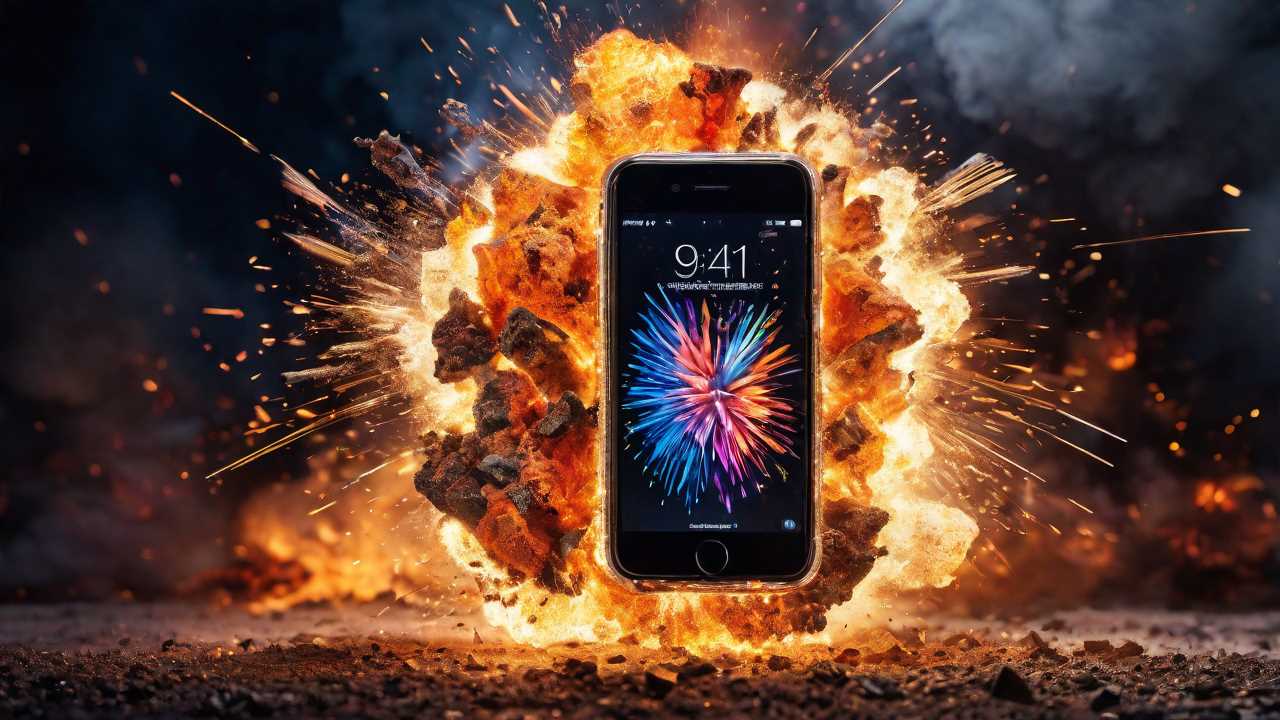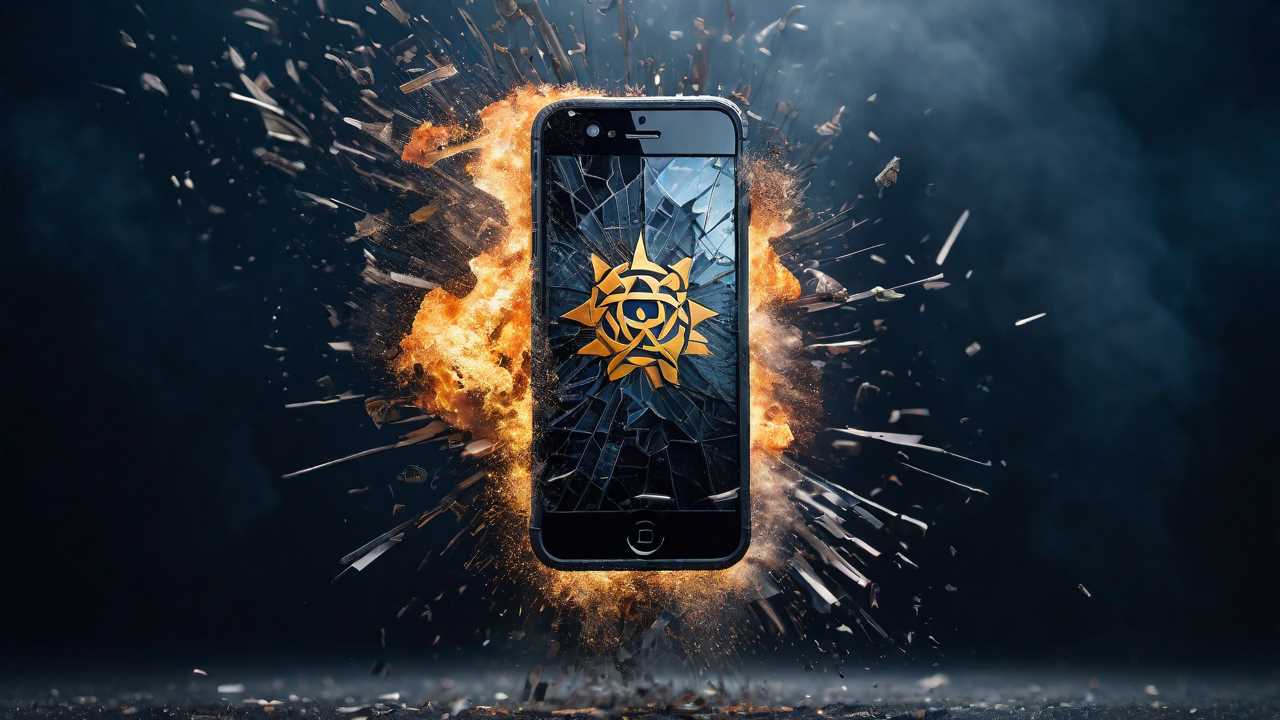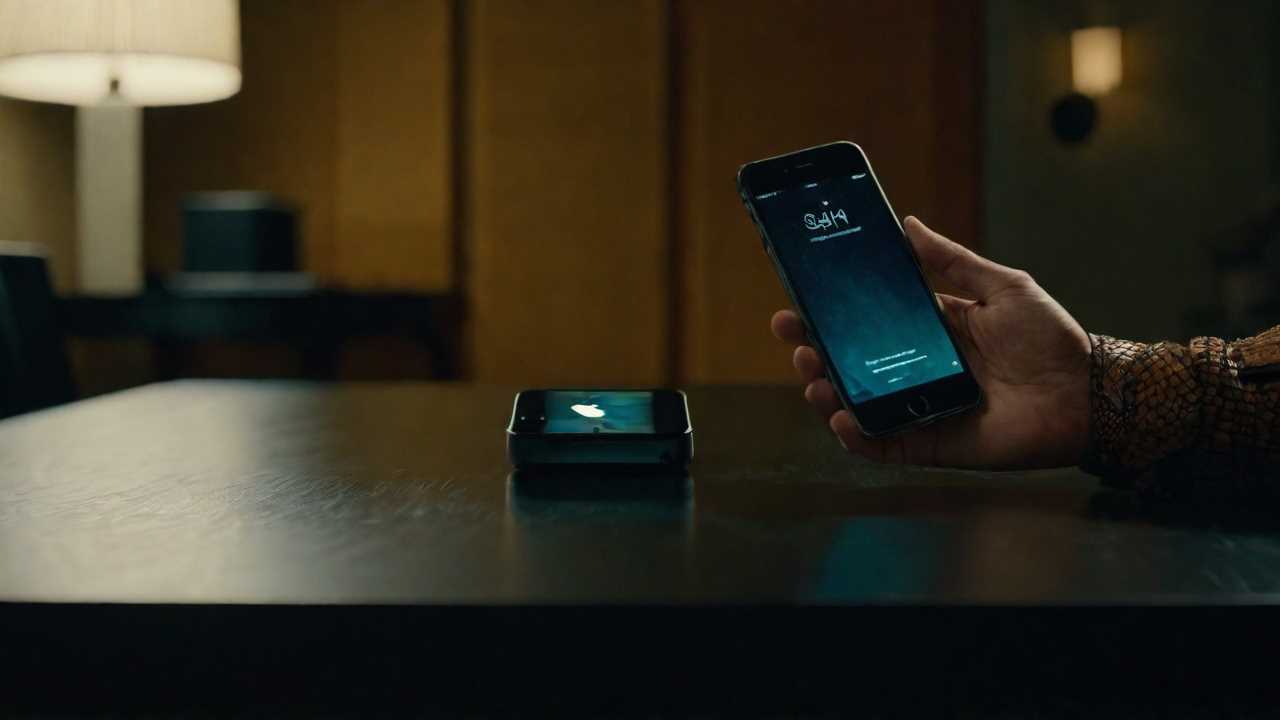
In the realm of cybersecurity, few events capture the attention of experts and enthusiasts as much as a successful and unprecedented hack. The recent explosive Triangulation attack, which compromised iPhones belonging to employees of renowned cybersecurity firm Kaspersky, has left the industry reeling with its audacity and sophistication.
This attack exploited an undocumented hardware feature, the discovery and purpose of which remain a mystery. Coupled with the exploitation of four zero-day vulnerabilities and the stealthy delivery of infections through iMessage texts, this attack has raised eyebrows and prompted intense speculation within the cybersecurity community.
The motives and identity of the attackers, as well as the implications for diplomatic missions and embassies, have ignited a heated debate that continues to captivate the minds of experts worldwide.
Key Takeaways
- iPhones belonging to Kaspersky employees were targeted in a sophisticated triangulation attack, potentially compromising thousands of devices.
- The attack exploited an undocumented hardware feature, indicating advanced technical capabilities of the attackers.
- Four zero-day vulnerabilities were utilized in the attack for several years, raising questions about the purpose and origin of the hardware feature.
- The backdooring campaign extended beyond Kaspersky employees, infecting iPhones of diplomatic missions and embassies, leading to the transmission of sensitive data to attacker-controlled servers.
Background of the Iphone Triangulation Attack

The background of the iPhone Triangulation Attack involves the exploitation of undocumented hardware features, zero-day vulnerabilities, and the backdooring of iPhones belonging to Kaspersky employees and diplomatic missions. This sophisticated attack backdoored dozens of iPhones, potentially even thousands, and was carried out by attackers with advanced technical capabilities.
The method of discovering the undocumented hardware feature that was exploited remains unknown, but it is speculated that accidental disclosure or hardware reverse engineering may have played a role. The attack also leveraged four zero-day vulnerabilities, which had been exploited for years, allowing the attackers to deliver infections through iMessage texts without the user’s action.
The malware was installed through a complex exploit chain, ultimately compromising the devices and transmitting sensitive data to attacker-controlled servers.
Exploitation of Undocumented Hardware Feature

To further understand the iPhone Triangulation Attack, it is crucial to examine the exploitation of an undisclosed hardware feature that played a pivotal role in the attackers’ ability to compromise the devices. This undisclosed hardware feature allowed the attackers to bypass memory protections and gain the ability to tamper with the underlying kernel memory. Although the purpose of this hardware feature remains unknown, it is speculated to be present in Apple’s M1 and M2 CPUs.
By exploiting a vulnerability in this feature, the attackers were able to bypass the device’s protection and execute their malicious code. The discovery of this undocumented hardware feature raises questions about how it was found, whether through accidental disclosure or hardware reverse engineering.
Understanding the exploitation of this hardware feature is crucial in comprehending the sophistication and effectiveness of the iPhone Triangulation Attack.
Long-term Exploitation of Four Zero-day Vulnerabilities

The long-term exploitation of four zero-day vulnerabilities allowed the attackers to maintain persistent access and control over the compromised devices. These zero-day vulnerabilities, which were unknown to Apple and had no available patches, enabled the attackers to infiltrate and compromise a large number of iPhones.
The attackers leveraged these vulnerabilities for an extended period of time, potentially years, without detection. By exploiting these vulnerabilities, the attackers were able to bypass security measures and gain unauthorized access to the devices. This level of access allowed them to install and execute malicious software, exfiltrate sensitive data, and maintain control over the compromised devices.
The long-term exploitation of these zero-day vulnerabilities highlights the need for constant vigilance and prompt patching of security vulnerabilities in order to prevent such attacks in the future.
Targeting of Diplomatic Missions and Embassies

Targeting diplomatic missions and embassies, the backdooring campaign exploited a series of zero-day vulnerabilities to compromise iPhones and gain unauthorized access to sensitive data. This alarming attack, known as the Triangulation attack, allowed the attackers to infect iPhones belonging to diplomatic missions and embassies, putting highly sensitive information at risk.
By leveraging the four critical zero-day vulnerabilities, the attackers were able to deliver the infections through iMessage texts, without requiring any user action. Once infected, the compromised devices transmitted the sensitive data to servers controlled by the attackers.
The scope of this attack was not limited to iPhones alone, as it also affected other Apple devices such as Macs, iPods, iPads, Apple TVs, and Apple Watches. The motive behind these targeted attacks on diplomatic missions and embassies remains unclear, raising concerns about the potential involvement of intelligence agencies and the motivations behind such actions.
Significance of the Mystery iPhone Function

The undisclosed hardware feature found in iPhones, known as the Mystery iPhone Function, played a pivotal role in the success of the Triangulation attack, allowing the attackers to bypass memory protections and gain control over the underlying kernel memory.
This unknown feature provided the attackers with the ability to tamper with the kernel memory, which is a critical component of the iPhone’s operating system. By exploiting a vulnerability in this hardware function, the attackers were able to bypass the memory protections put in place by Apple, enabling them to carry out their malicious activities without detection.
The significance of this Mystery iPhone Function lies in its ability to grant unauthorized access and control over the device’s core system, highlighting the advanced technical capabilities of the attackers and the potential vulnerabilities that exist within Apple’s devices.
Speculation on the Attackers’ Identity

There has been much speculation surrounding the identity of the attackers responsible for the Triangulation attack on iPhones belonging to Kaspersky employees. The sophisticated nature of the attack has led to various theories regarding the possible perpetrators. One possibility is the involvement of intelligence agencies such as the NSA or FSB, given the targeting of foreign embassies in Russia.
The attack’s focus on compromising iPhones belonging to Kaspersky employees, who are known for their expertise in cybersecurity, suggests a deliberate and highly skilled operation. The lack of user interaction required for the attack, which exploited iMessages or SMS messages, further points towards a state-sponsored or advanced hacking group.
However, without concrete evidence, the speculation surrounding the attackers’ identity remains just that – speculation. Further investigation and analysis are necessary to determine the true culprits behind this unprecedented hack.
Contemplating NSA or FSB Involvement

One theory that has been widely debated is the potential involvement of intelligence agencies such as the NSA or FSB in the Triangulation attack on iPhones belonging to Kaspersky employees. The attack, which backdoored dozens of iPhones and potentially thousands more, showcased a level of technical sophistication that aligns with the capabilities of these agencies.
Furthermore, the targeting of foreign embassies in Russia raises suspicions that state-sponsored actors may be involved. The motivations of different intelligence agencies, such as gathering sensitive information or monitoring diplomatic communications, have been subjects of intense debate.
However, it is important to note that at this stage, these claims remain speculative and require further investigation and evidence to draw definitive conclusions about the involvement of any specific intelligence agency.
Motivations Behind Targeting Foreign Embassies

With suspicions of state-sponsored actors involved in the Triangulation attack, an examination of the motivations behind targeting foreign embassies becomes crucial. Foreign embassies serve as diplomatic hubs, representing their respective countries and engaging in a wide range of political activities. These institutions often hold sensitive information and play a significant role in shaping international relations.
Targeting foreign embassies provides potential attackers with access to valuable intelligence, allowing them to gain insights into diplomatic negotiations, political strategies, and other confidential matters.
Compromising foreign embassies can enable state-sponsored actors to manipulate or disrupt diplomatic efforts, potentially undermining trust between nations. By infiltrating these institutions, attackers can gain a strategic advantage, exert influence, and further their own geopolitical agendas. Understanding the motivations behind targeting foreign embassies is crucial for assessing the extent of the threat and developing appropriate countermeasures.
Lack of User Interaction in Attack Delivery

The lack of user interaction in the delivery of the Triangulation attack is a key factor that contributed to its successful exploitation of iPhones belonging to Kaspersky employees. Unlike traditional attacks that rely on users clicking on malicious links or downloading infected files, the Triangulation attack was delivered through iMessage texts without any action required from the users.
This means that the victims were not aware that they were being targeted, making it easier for the attackers to gain access to their devices. By exploiting zero-day vulnerabilities and leveraging an undocumented hardware feature, the attackers were able to install malware on the iPhones and gain control over the devices.
This lack of user interaction highlights the need for robust security measures on mobile devices to protect against such sophisticated attacks.
Frequently Asked Questions
How Were the Iphones Compromised in the Triangulation Attack?
The iPhones were compromised in the triangulation attack through the exploitation of four zero-day vulnerabilities, which allowed the attackers to backdoor the devices. The attack leveraged an undocumented hardware feature to gain access to sensitive data.
What Specific Undocumented Hardware Feature Was Exploited in the Attack?
The specific undocumented hardware feature that was exploited in the attack remains unknown. Further investigation is needed to determine the nature and purpose of this feature and how it was leveraged by the attackers.
How Long Were the Four Zero-Day Vulnerabilities Exploited Before Being Discovered?
The duration of the exploitation of the four zero-day vulnerabilities before discovery remains unknown. Further investigation is required to determine the timeline and shed light on the extent of the compromise.
Why Were Diplomatic Missions and Embassies Targeted in This Attack?
The targeting of diplomatic missions and embassies in the attack raises questions about the motivations and possible involvement of intelligence agencies. The attackers exploited vulnerabilities to infect iPhones, Macs, iPods, iPads, Apple TVs, and Apple Watches.
What Is the Significance of the Mystery Iphone Function in the Triangulation Attack?
The mystery iPhone function played a pivotal role in the Triangulation attack. It allowed the attackers to bypass memory protections, tamper with kernel memory, and exploit a vulnerability in the feature, ultimately compromising iPhones in the unprecedented hack.
Read Get Hitch for all your AI, VPN, tech and cyber security news and information








